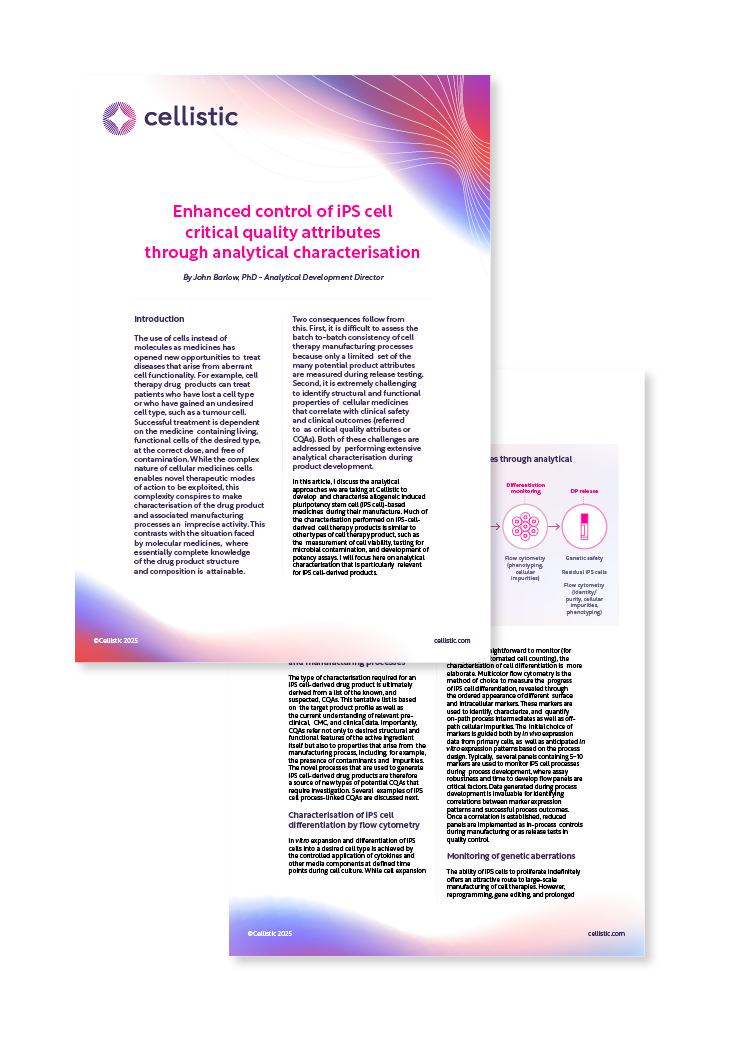Introduction
The use of cells instead of molecules as medicines has opened new opportunities to treat diseases that arise from aberrant cell functionality. For example, cell therapy drug products can treat patients who have lost a cell type or who have gained an undesired cell type, such as a tumour cell. Successful treatment is dependent on the medicine containing living, functional cells of the desired type, at the correct dose, and free of contamination. While the complex nature of cellular medicines cells enables novel therapeutic modes of action to be exploited, this complexity conspires to make characterisation of the drug product and associated manufacturing processes an imprecise activity. This contrasts with the situation faced by molecular medicines, where essentially complete knowledge of the drug product structure and composition is attainable. Two consequences follow from this. First, it is difficult to assess the batch to-batch consistency of cell therapy manufacturing processes because only a limited set of the many potential product attributes are measured during release testing. Second, it is extremely challenging to identify structural and functional properties of cellular medicines that correlate with clinical safety and clinical outcomes (referred to as critical quality attributes or CQAs). Both of these challenges are addressed by performing extensive analytical characterisation during product development.
In this article, John Barlow, Analytical Development Director at Cellistic, discusses the analytical approaches we are taking to develop and characterise allogeneic induced pluripotency stem cell (iPS cell)-based medicines during their manufacture. Much of the characterisation performed on iPS-cell-derived cell therapy products is similar to other types of cell therapy product, such as the measurement of cell viability, testing for microbial contamination, and development of potency assays.
Click the link below to download the full article by John Barlow on Enhanced control of iPS cell critical quality attributes through analytical charachterisation

Access the full article

